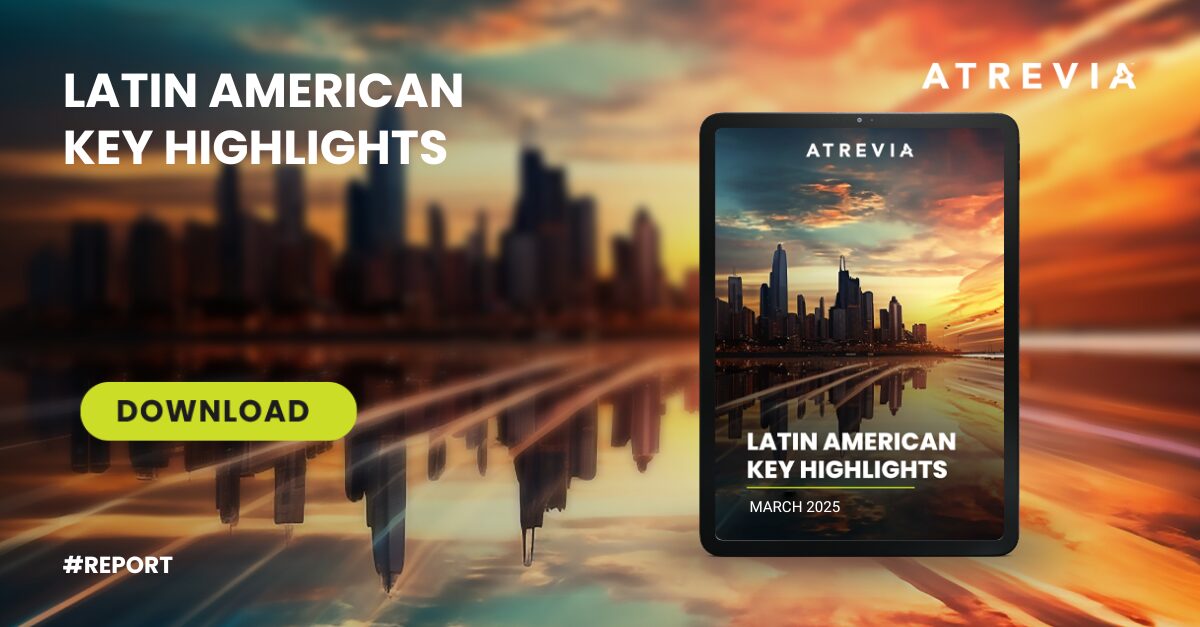
Latin American Keys is an informative and analytical summary regarding the political and economic situation in the Latin American region. These key takeaways, prepared monthly by ATREVIA´s Analysis and Research team, serve to be a useful tool in understanding the evolution of the political-institutional state of Latin America.
One of the key trends in recent months has been the decline in inflation across most Latin Americancountries, accompanied by interest rate cuts and moderate GDP growth.
However, in the past month, inflation has seen a slight, widespread uptick. The short term will be crucial in determining whether this marks a turning point or if the region continues its slow but steady path toward stability and growth.
So far, rising prices have been a key factor in Lula da Silva’s declining popularity, now at its lowest across his three terms as Brazil’s president. At the same time, Argentine leader Javier Milei has also seen a significant drop, though in a context marked by the $Libra cryptocurrency scandal.
Colombia’s government faces a challenging scenario—not only due to inflation and weak approval ratings but also because of legislative gridlock in the Senate, which is blocking its social reforms. Meanwhile, in Chile, corruption scandals have led to the resignation of a minister and the president of the Chamber of Deputies.
Yamandú Orsi has taken office as Uruguay’s new leader, and in less than a month, Ecuador will elect his counterpart. The presidential race remains highly competitive, following a first round in which the two contenders were separated by just 0.17% of the vote.
Peru, on the other hand, continues to report strong economic figures, with GDP projected to grow by 4% in 2025. In Mexico, trade tensions with the United States have yet to cause significant disruptions: no investment projects have been canceled, and the peso remains stable.
Amid major geopolitical shifts, the European Union is working to strengthen political, economic, and security cooperation with Latin America. Its new agricultural policy roadmap could play a role in this relationship, with the balance between protectionism and free trade still to be defined.